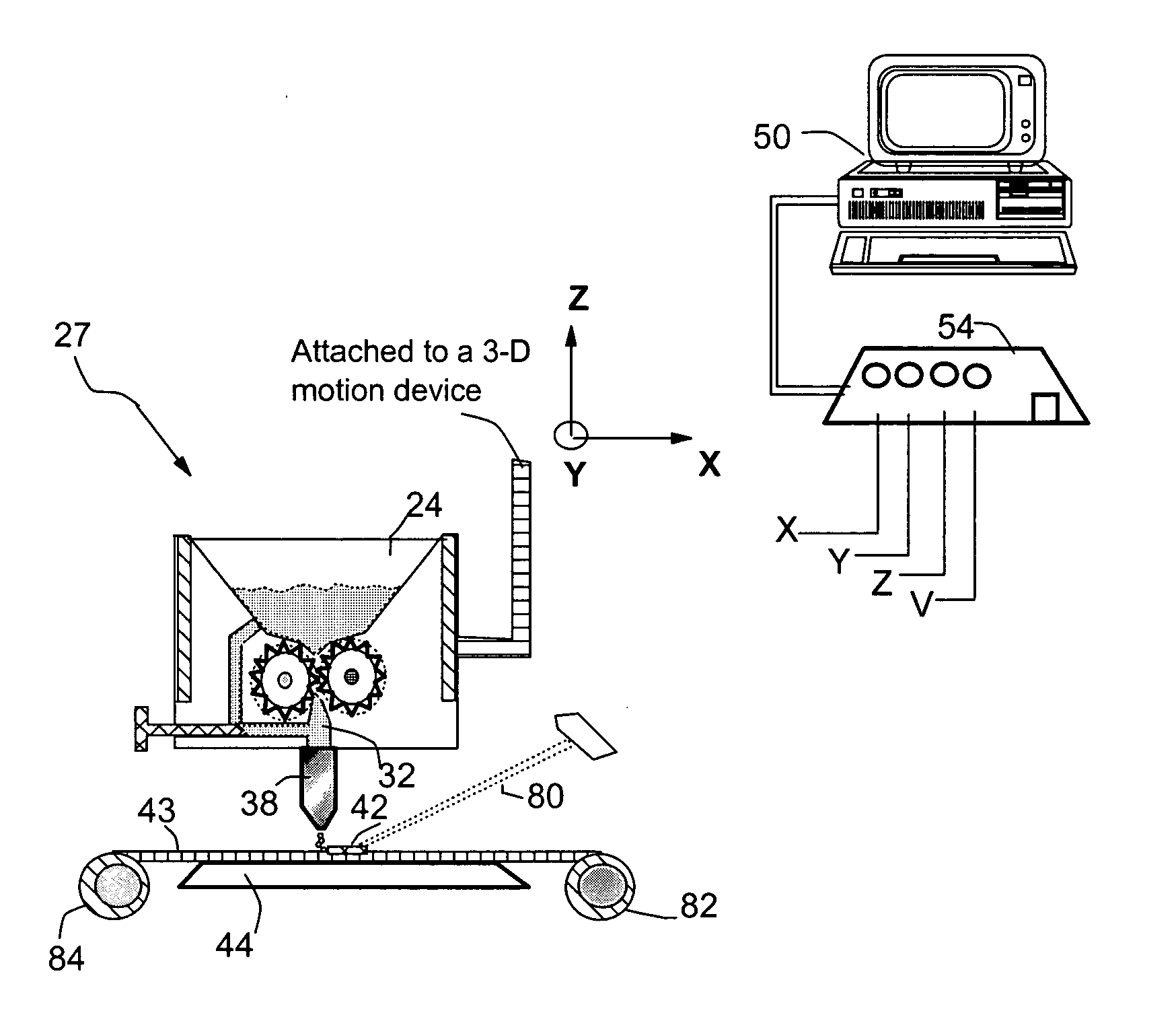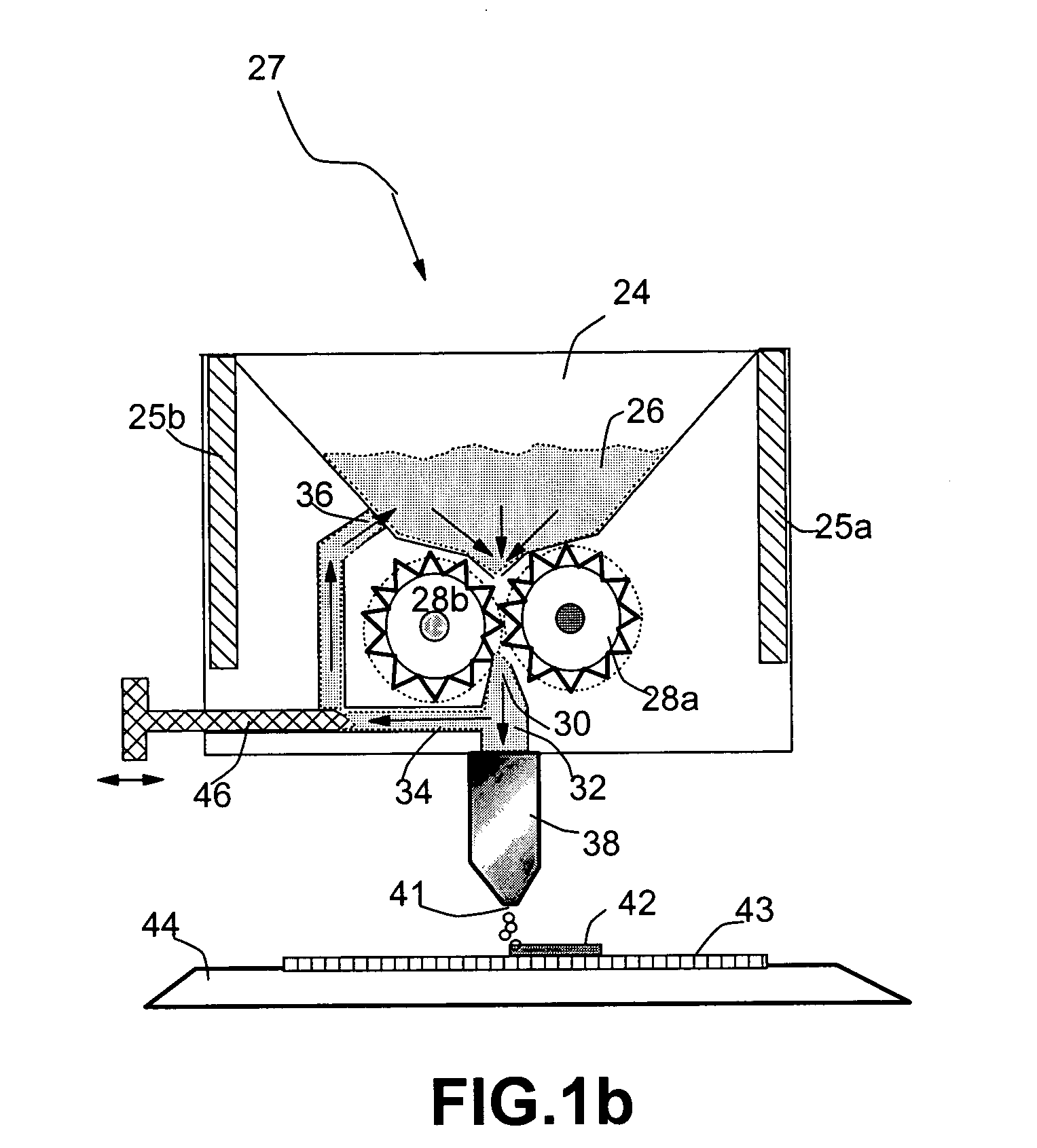Direct write process and apparatus
a technology of direct writing and process, which is applied in the direction of recording apparatus, manufacturing tools, instruments, etc., can solve the problems of insufficient application of large-scale rapid prototyping techniques, insufficient use of large-scale rapid prototyping methods, etc., to achieve rapid device prototyping and manufacturing, good combination of device accuracy and fabrication rate, and low-volume production run cost-effective
- Summary
- Abstract
- Description
- Claims
- Application Information
AI Technical Summary
Benefits of technology
Problems solved by technology
Method used
Image
Examples
Embodiment Construction
[0038] Process and Apparatus:
[0039]FIG. 1(a) illustrates one preferred embodiment of the presently invented process and apparatus for fabricating passive or active components onto a substrate surface to make a micro-electronic device, preferably on a point-by-point basis. The process begins with the creation of a computer-aided design (CAD in the form of a drawing, image, or geometry representation) of the device using a computer 50. This method further involves the operation of a system that includes computer software and control hardware, e.g., motion controller / indexer / servo 54. The system includes a support member 44 by which the device substrate 43 is supported while the device components are being deposited. The system also has an inkjet printhead-based dispensing head 38 for dispensing liquid droplets from a precursor fluid material 26. This material includes a liquid ingredient that helps to make the material in a flowable state while still residing in a chamber 32 of the d...
PUM
| Property | Measurement | Unit |
|---|---|---|
| Thickness | aaaaa | aaaaa |
| Pressure | aaaaa | aaaaa |
| Flow rate | aaaaa | aaaaa |
Abstract
Description
Claims
Application Information
 Login to View More
Login to View More - R&D
- Intellectual Property
- Life Sciences
- Materials
- Tech Scout
- Unparalleled Data Quality
- Higher Quality Content
- 60% Fewer Hallucinations
Browse by: Latest US Patents, China's latest patents, Technical Efficacy Thesaurus, Application Domain, Technology Topic, Popular Technical Reports.
© 2025 PatSnap. All rights reserved.Legal|Privacy policy|Modern Slavery Act Transparency Statement|Sitemap|About US| Contact US: help@patsnap.com



